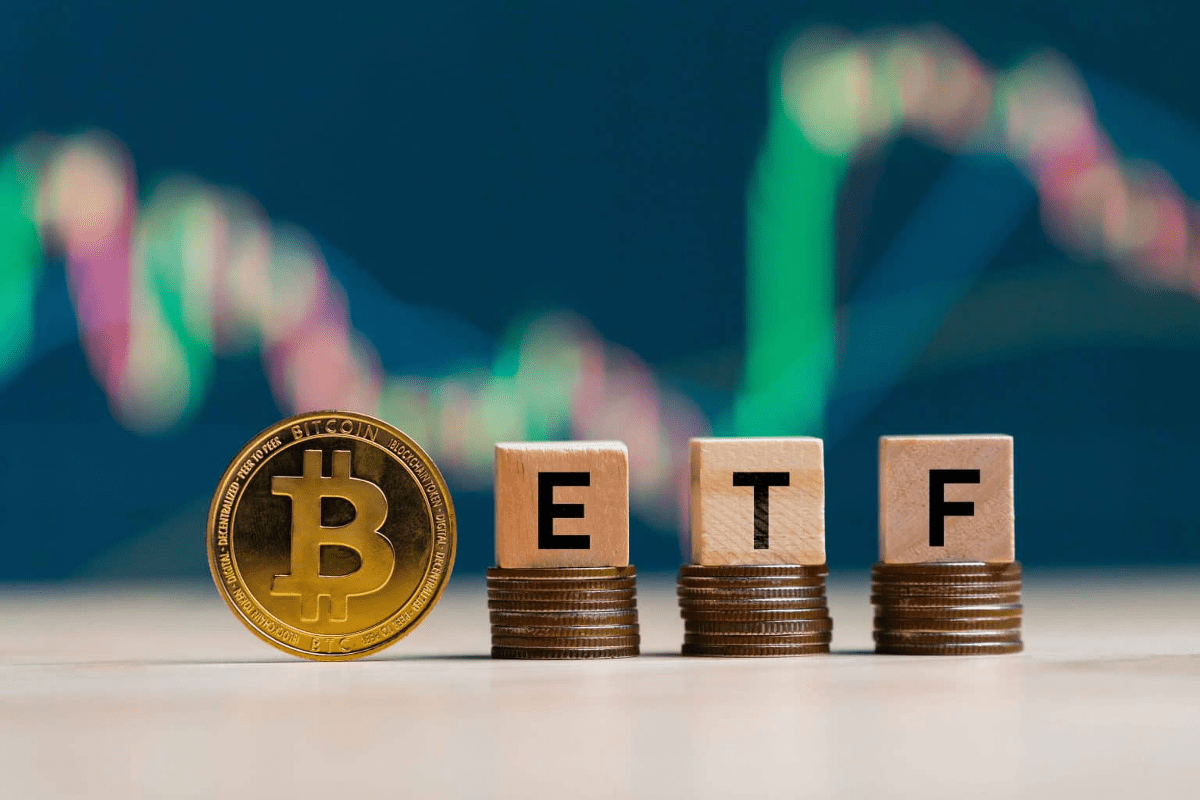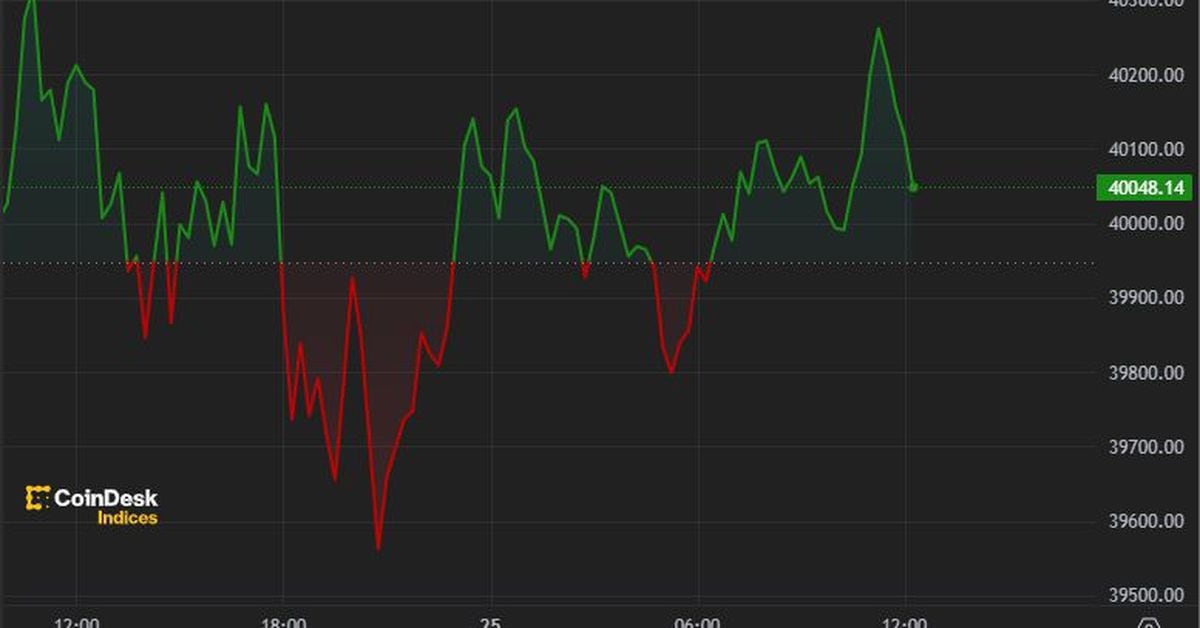From a financial and tax perspective, which is more suitable for the establishment of a cryptocurrency mining company, Hong Kong or Singapore?
Comparing Hong Kong and Singapore Which Country is More Favourable for Setting Up a Cryptocurrency Mining Company in Terms of Finances and Taxes?Author | TaxDAO
Introduction: Tax Issues Facing Mining Companies
Mining, as a productive industry in the field of cryptocurrency assets, faces many challenges and risks due to its high input and asset-intensive operating model. One of the main risks is taxation. Mining activities directly generate cryptocurrency assets, and different countries or regions have different tax treatments and regulations for cryptocurrency assets, which significantly affect mining revenues. Singapore and Hong Kong, as two financial centers in Asia, have open and friendly cryptocurrency asset policies, as well as their own financial and tax characteristics and advantages, making them ideal examples for cryptocurrency mining companies to choose their locations.
From a tax perspective, the location and operation of multinational mining company headquarters have a significant impact on tax costs, from explicit tax rate differences to implicit declaration and taxation costs. Mining companies headquartered in different countries face complex and evolving tax environments. This article analyzes the strengths and weaknesses of Singapore and Hong Kong’s financial and tax policies, and explores the most suitable location and operating strategies for cryptocurrency mining companies.
This article first compares the financial and tax policies of Singapore and Hong Kong for the headquarters of multinational corporations, including corporate income tax rates, tax exemptions, tax treaties, and other aspects. Next, it analyzes the financial and tax characteristics of cryptocurrency mining companies, including the sources, calculation, and reporting methods of income and costs, as well as the different tax treatments and risks they may face in different countries or regions. Finally, it assesses the suitability of both locations for cryptocurrency mining companies and provides recommendations and prospects.
- FTX keeps restarting with continuous good news, has established three acquisition parties, and is currently buying users’ assets off the market at a 50% discount.
- Deep Report Trends and Opportunities – How to find an entry point in the TON ecosystem?
- Exclusive Interview with OrdzGames How Was the First PVP Blockchain Game in the Ordinals Ecosystem Born?
1 Review: Corporate Tax Policies in Singapore and Hong Kong
Singapore has a corporate income tax rate of 17%, but there are many tax incentives such as the Productivity and Innovation Credit Scheme (PIC Scheme), the International Headquarters Award Scheme (IHQ Scheme), and the Automation Support Package for Manufacturing and Engineering (AME Scheme), which allow companies that meet certain conditions to enjoy an actual tax rate as low as 5%. Hong Kong has a corporate income tax rate of 16.5% and has implemented a two-tiered profits tax system since 2018, with a tax rate of 8.25% applied to the first HKD 2 million (approximately USD 256,000) of profit, and the remaining portion taxed at 16.5%.
Both Singapore and Hong Kong have extensive networks of tax treaties and have signed agreements to avoid double taxation (DTA) with multiple countries or regions, which can reduce the potential for double taxation in cross-border transactions. Both regions also participate in international cooperation and initiatives on information exchange and anti-tax avoidance, such as the Multilateral Competent Authority Agreement (MCAA) and the Base Erosion and Profit Shifting (BEPS) Action Plan. For more information on the tax systems in Singapore and Hong Kong, please refer to the first article in this series.
2 Cryptocurrency Mining Enterprises’ Tax and Financial Features
2.1 Mining Mechanism and Characteristics Analysis
Mining income refers to the rewards obtained by participating in the consensus mechanism of a cryptocurrency network, which involves verifying transactions or creating new units of cryptocurrency using computer equipment. There are two main sources of mining income: fixed block rewards, where miners receive a certain amount of cryptocurrency whenever a new block is added to the blockchain; and variable transaction fees, where miners receive a certain percentage or amount of fees for validating transactions. The calculation of mining income depends on the consensus mechanism used, primarily Proof of Work (PoW) and Proof of Stake (PoS).
PoW requires miners to compete for block rewards and transaction fees by solving complex mathematical problems, with the income being directly proportional to the computational power invested. Companies that mine these types of cryptocurrencies typically need to invest significant resources in purchasing high-powered mining machines and setting up mining facilities. Additionally, mining also consumes a large amount of electricity. Bitcoin, for example, uses the Proof of Work mechanism.
PoS requires miners to stake a certain amount of cryptocurrency to participate in the network consensus, with the income being directly proportional to the amount of cryptocurrency held or locked. The PoS method was developed to overcome the limitations of PoW. In PoW, although a large amount of computational power is invested in block nodes, this power is consumed through calculating random numbers, resulting in only one node’s work being deemed valid. To save resources and costs, the PoS method requires investors to lock their cryptocurrency in a staking pool for a period of time. These investors are referred to as stakers. According to the PoS mechanism, the more cryptocurrency a staker locks and the longer they lock it (referred to as “coin age”), the higher their probability of being granted mining rights and receiving corresponding rewards.
However, most retail investors do not have the capability to mine blocks. In order to prevent resource waste and improve block allocation efficiency, the Delegated Proof of Stake (DPoS) mechanism was introduced. DPoS is a voting-based algorithm where stakeholders vote to elect who has the right to mine blocks. The weight of stakeholder votes is still determined by the locked assets and coin age. Those selected as miners will then distribute a portion of the mining rewards to the stakeholders in the form of dividends.
In summary, the core difference between PoW and PoS lies in the need for substantial investment and resource consumption. This also implies that companies engaged in PoW mining require more fixed assets compared to PoS companies. The next section of this article will further analyze the tax and financial features of both types of enterprises. Currently, most mining companies engage in PoW mining, but with ETH transitioning to PoS in 2022, mining in the PoS manner is expected to become a new growth point.
2.2 Types of Taxes Involved in Mining Income
The tax treatment of cryptocurrency mining income mainly depends on the country or region’s definition and classification of cryptocurrencies, as well as the recognition and measurement of mining income and expenses. Mining income is subject to two main types of taxes, depending on the country or region:
Firstly, direct taxes, such as income tax and capital gains tax, are imposed on mining income. In most countries with mining operations, mining income is treated as business income for companies or individuals, and is subject to corporate income tax or personal income tax. The income tax rate is determined based on factors such as the miner’s identity (individual or company), income level, and place of residence. For example, in the United States, according to the Internal Revenue Code Section 61 and other regulations, individuals or companies engaged in mining cryptocurrencies like Bitcoin are considered self-employed, and are required to pay federal income tax and self-employment tax accordingly. In most countries, capital gains tax or income tax needs to be paid when mining companies or individuals hold the mined cryptocurrency for a certain period and then sell it for profit. In the United States, for example, capital gains tax is paid based on different rates depending on the holding period. However, some countries and regions do not impose capital gains tax under certain conditions, such as Singapore and Hong Kong.
The second type is value-added tax or goods and services tax imposed on mining income. Currently, there is no unified opinion on whether mining income should be subject to value-added tax or goods and services tax in different countries or regions. In the European Union, except for France, most countries (such as Germany, Ireland, Sweden, etc.) do not consider mining operations applicable to value-added tax. Israel, based on the regulations released in 2017 regarding taxing virtual currency activities, treats mining operations as services and imposes a 17% value-added tax rate. New Zealand also considers mining operations as services and imposes a 15% goods and services tax.
Some countries, for the purpose of industry resource adjustment and other considerations, may impose consumption tax on mining companies. For example, in the United States, according to a “Budget Supplemental Summary” released by the U.S. Department of Treasury in March 2023, one clause suggests imposing consumption tax in stages based on the electricity cost used in cryptocurrency mining. These companies will be required to report their electricity consumption and types used. The proposal suggests implementing new tax rules starting in 2024, gradually increasing at a rate of 10% per year for three years, reaching a maximum tax rate of 30% in the third year.
2.3 Financial and Tax Issues Mining Companies Need to Deal With
Depending on the mining method and the tax regulations of the country or region, mining companies need to deal with the following financial and tax issues:
How to determine the timing and amount of mining income. Generally, mining companies recognize mining income when they receive block rewards or transaction fees, i.e., when revenue is realized. However, companies mining DPoS cryptocurrencies may need to recognize income as soon as they deposit the cryptocurrency into a staking pool and complete the voting process, without waiting for node mining and dividend distribution. This is because dividend income at this point is “recognizable” under the accrual accounting method. Different recognition timing will affect the income measurement and tax reporting of mining companies. Additionally, due to the significant price volatility of cryptocurrencies, mining companies also need to determine the exchange rate to convert cryptocurrencies into the reporting currency. Generally, mining companies can refer to the exchange rates published by local authorities or reputable institutions, or use the rates provided by cryptocurrency trading platforms.
How to calculate and deduct mining costs and expenses reasonably. For mining companies using the PoW method, the main costs and expenses include purchasing computing equipment, paying for electricity, renting venues, etc. These costs and expenses can be deducted or amortized as productive expenditures according to relevant regulations. For mining companies using the PoS or DPoS method, the main costs and expenses include staking fees, network service fees, etc. Whether these costs and expenses can be deducted as expenditures depends on the nature of staking cryptocurrencies and the tax treatment in the country or region. For example, in the United States, staking cryptocurrencies are seen as an investment activity and cannot be deducted as expenditures.
How to deal with tax issues involved in cross-border transactions. In addition to where mining income is recognized, mining companies may be involved in cross-border transactions due to the global circulation of cryptocurrencies, such as purchasing computing equipment overseas, conducting mining activities overseas, selling or exchanging cryptocurrencies overseas, etc.
3 Policy Analysis of Cryptocurrency Mining Companies in Singapore and Hong Kong
3.1 Regulatory Framework and Development Trends in Singapore and Hong Kong
Singapore and Hong Kong are both important financial centers in Asia and important markets for the cryptocurrency industry. Both places have an open and inclusive regulatory attitude towards cryptocurrencies, and their policy directions are relatively stable.
In Hong Kong, cryptocurrency mining is not an illegal activity, but if the activity is conducted on a large scale, it may be subject to regulation under data center laws. Due to the scarcity of land in Hong Kong (Hong Kong has the most expensive land prices in the world), operating cryptocurrency mining activities in Hong Kong would involve a significant amount of land use rights. Simultaneously, mining companies must ensure that the buildings they operate comply with the Building Energy Efficiency Regulations, which are laws and regulations specifically for intensive power demand. Similar to Hong Kong, Singapore does not have specific regulations on cryptocurrency mining, but if mining activities involve power consumption, taxation, or other issues, they also need to comply with local environmental and land requirements.
Considering that PoW mining consumes a large amount of electricity, electricity cost is the main variable cost for mining companies. Therefore, it is unlikely that any mining company will deploy mining farms in countries with high land prices and electricity prices such as Hong Kong and Singapore, but will instead set up mining farms in other jurisdictions, with the mining farms responsible for hosting and operation services. Setting up regional headquarters or global headquarters in Singapore or Hong Kong, obtaining mining income, and assuming the main risks of the business. At this time, the economic substance of the business architecture and the balanced tax policy between regions become crucial factors in selecting the location of mining company headquarters.
3.2 The impact of tax policies in the two regions on mining companies
The tax policies in Hong Kong are simpler for mining companies. Hong Kong’s corporate income tax follows a strict territorial principle, only taxing income derived from Hong Kong. For example, mining companies typically engage in trading operations for buying and selling mining machines. If the decision-makers and business contracts are not handled within Hong Kong, theoretically, the income from mining machine trade can be declared as offshore income to exempt Hong Kong income tax. On the other hand, Singaporean resident companies need to pay income tax on income derived from overseas. As mentioned earlier, when PoW mining companies set up mining farms in other countries or regions and establish international headquarters in Hong Kong or Singapore, setting up an international headquarters in Singapore may involve more elaborate tax procedures. Although Singapore’s extensive DTA agreements generally prevent double taxation disputes for companies, they still face higher corporate income tax costs when obtaining the aforementioned overseas trade income and profits.
While Singapore has advantages in small-scale enterprises and clearer policies, the mining industry is a highly scalable industry, and a large investment is needed to generate substantial profits. Both the mining machines required for PoW and the tokens required for PoS need to reach a certain amount to achieve economies of scale and generate revenue. In addition, both Hong Kong and Singapore do not currently include cryptocurrency mining in the calculation for research and development expenditure deductions. Therefore, for large-scale enterprises, Hong Kong may have a lower actual tax burden and be more suitable for the entry of large-scale cryptocurrency mining businesses.
However, Singapore has unique advantages for enterprises mining PoS tokens, as the PoS mining model does not require companies to establish mining farms worldwide, but only requires companies to lock tokens in staking pools. Singapore has a more comprehensive regulatory framework for exchanges and staking protocols compared to Hong Kong, so the systemic risks faced by PoS mining in Singapore may be lower. For example, Singapore has implemented a comprehensive licensing regime for Digital Payment Tokens (DPT), while the licensing regime in Hong Kong is still under development. At the same time, since PoS mining does not require the establishment of physical mining farms in other countries or regions, Singapore’s tax policies do not bring additional administrative costs. Furthermore, Singapore’s tax incentives and policy support can allow mining companies adopting PoS to reduce their effective tax rates and operating costs, thereby increasing their income levels. For instance, Singapore has various tax reduction measures for corporate income tax, such as applying for the Productivity and Innovation Credit Scheme (PIC Scheme) and the International Headquarters Award Scheme (IHQ Scheme) from the Singapore Economic Development Board (EDB).
4 Conclusion and Recommendation
Based on the analysis of Singapore’s and Hong Kong’s policies for cryptocurrency mining companies, we believe:
Singapore and Hong Kong are both suitable headquarters for cryptocurrency mining companies, but they also have their own advantages and disadvantages. Singapore has strong appeal in terms of regulatory framework, technological innovation, and market openness, while Hong Kong has a slight advantage in terms of income tax rates.
When choosing Singapore or Hong Kong as the headquarters for a cryptocurrency mining company, it is necessary to consider their own characteristics and needs, as well as the policy environment and market conditions in both places. If the mining company mainly mines PoW tokens, it is more suitable to choose Hong Kong and set a reasonable tax burden for the jurisdiction of the actual mining location. If the mining company mainly mines PoS tokens, Singapore is a worthy consideration and easier to obtain the stacking effect of tax benefits.
Singapore and Hong Kong are both important financial hubs in Asia. With the arrival of the Web3.0 era, the governments of both places have begun to closely monitor the cutting-edge dynamics of cryptocurrency assets and formulate corresponding regulations and guidelines to standardize the development of the cryptocurrency market. TaxDAO will systematically compare and analyze the advantages and disadvantages of financial and tax policies in both places, in order to explore more suitable site selection and operational strategies for multinational cryptocurrency enterprises. Stay tuned for more detailed analysis.
References:
[1] Fan Blockchain. (2022). The Differences and Implementations of DPOS and POS.
[2] Zheng, M., Wang, K., Wang, Z., & Yan, H. (2021). Research on the Tax Issues of Cryptocurrency under the Background of Digital Economy—Taking the Mining Mechanism of Bitcoin as an Example. World Economy Research, 10(1), 1-8.
[3] Zhang, C. (2021). Research on the Tax Issues of Cryptocurrency in the United States: From System Design to Taxation and Administration. Taxation and Economy, (06), 14-22.
We will continue to update Blocking; if you have any questions or suggestions, please contact us!
Was this article helpful?
93 out of 132 found this helpful
Related articles
- October Cryptocurrency Market Observation The table is set, the bull market feast is about to begin.
- Using gold as a reference, how will Bitcoin ETF drive the next wave of crypto bull market?
- LianGuai Daily | Proof Group is participating in the bidding for FTX’s relaunch plan; Ava Labs lays off 12% of its employees.
- The Grand Handover Traditional Finance Steals the Spotlight in Crypto’s Next Era
- CBDCs The Hip New Alternative to SWIFT?
- Bitcoin ETFs Fueling the Rise of Digital Investment or Just Another Wild Ride for Crypto Enthusiasts?
- The Institutional Crypto Revolution: A Comedy of Coinciding Developments






